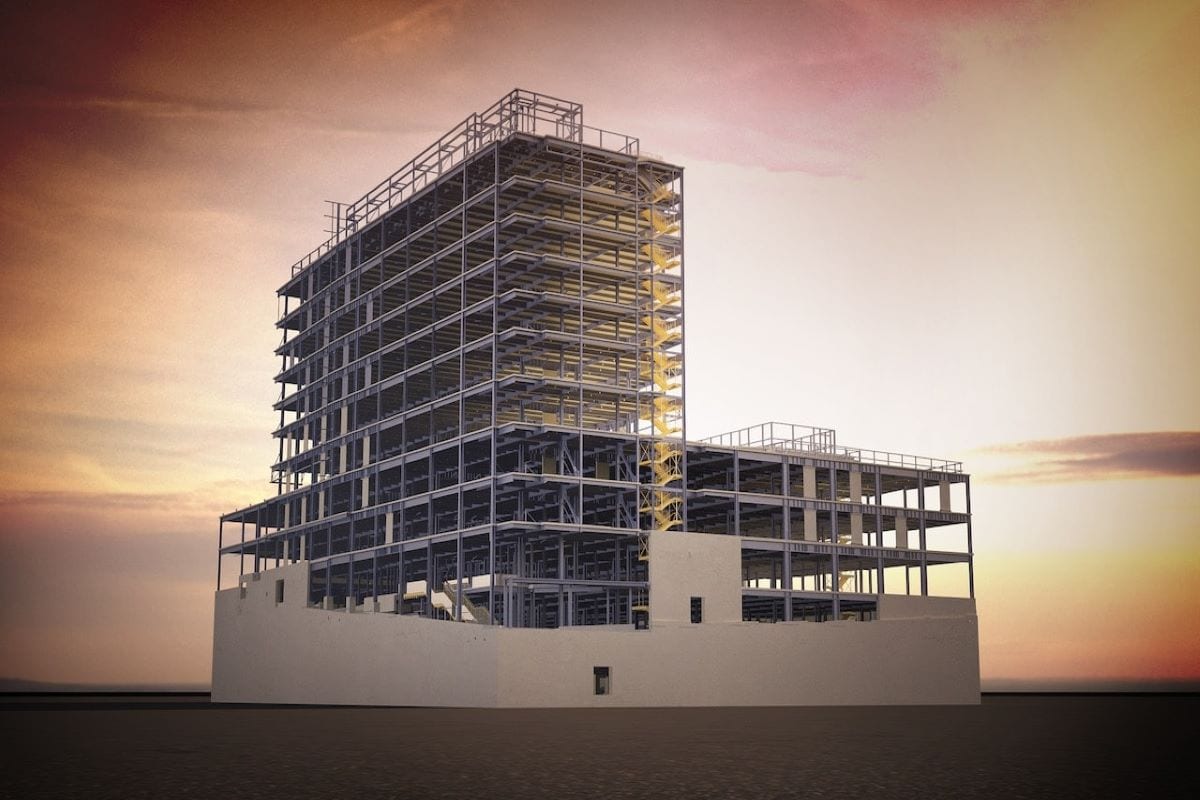Construction is the largest industry in the world, accounting for 13% of global GDP. Recent analysis by McKinsey estimated that US$69.4 trillion in global infrastructure investment will be needed between now and 2035. And yet, as an industry, construction regularly underperforms. Over the last 20 years, it has experienced just 1% growth annually, with time and cost overruns commonplace.
However, with trends like the adoption of technology enabling data-driven decision making and reducing delays, material usage and costs, and a greater emphasis on circular economy solutions and diversification of hiring criteria, the global construction industry is poised for growth. Here are 5 trends we expect to see in the global construction industry:
Trend 1) A Transition to Digital Delivery
Over the last ten years, the construction industry has undergone drastic change, fueled by the adoption of new technology. From remote sensing and the use of drones and robots, through to 3D printing of materials like geopolymers and concrete, technology is having a huge impact on construction.
The transition to digital delivery is—by far—the biggest technological trend to watch in the construction industry right now. The global Building Information Modelling (BIM) market is projected to reach US$10.7 billion by 2026 (up from US$6.6 billion in 2022), representing a 12.5% compound annual growth rate. North America is expected to be the market leader, accounting for over 30% of the global BIM market.
It is little wonder that the transition to digital delivery, encompassing lifecycle asset management via highly accurate digital twins, is gaining such momentum. Enabling data-driven decision making, digital delivery adds value at every stage of the Design-Build-Manage construction lifecycle, from initial scoping and 3D visualization, through to holistic ongoing asset management. It helps eradicate clashes early on, significantly reducing rework, schedule delays, material wastage and overall costs.
Smart buildings and infrastructure that integrate with the Internet of Things (IoT) will increase data availability and enable more efficient operations, as well as new business models.
Trend 2) Labour Shortages Encourage Diversification in Hiring Criteria
The United States, along with many other countries, is facing a skills crisis. The latest data from the Bureau of Labor Statistics indicates that 2.8 million workers are missing from the labour force compared to February 2020. There are currently 11 million open jobs in the US, but only 5.7 million unemployed workers. So then, it’s little wonder that 91% of employers in the construction industry report difficulty filling positions. This skills crisis is expected to worsen with a portion of the US$1.2 trillion worth of funding allocated via the Infrastructure Investment and Jobs Act starting to flow into the industry.
![]()
In Australia, the strongest job market in 50 years has significantly increased number of occupations suffering acute labor shortages. According to the National Skills Commission’s most recent annual Skills Priority List, the number of occupations where workers are in short supply jumped to 286 in 2022, up from 153 in 2021. These figures indicate that 31% of occupations are experiencing worker shortages.
To combat these labor shortages, diversification in hiring criteria is on the rise. There is a real shift away from requiring candidates to have a trade qualification and a specific number of years of experience. Instead, employers will focus on hiring new employees who possess the right transferrable skills, attitude and culture fit.
More and more, employers are upskilling, re-skilling and training new recruits on the job. For instance, people with a background in video game development may have skills that can be used in construction visualization and planning. Hiring people with a more diverse skill set and a broader range of experience offers a raft of benefits—it can help bring a fresh perspective to traditional processes. It’s worthwhile to note that introducing a diversity of background in new candidates could also likely result in innovation or disruption of traditional business practices – construction drawings may need to be presented in a way that is easier for a less experienced person to interpret; or construction sequence animations might be used to explain delivery approaches rather than complex drawings and written work instructions.
Trend 3) Fluctuating Material Costs Will Continue
The cost of many building materials reached a peak in June 2022—surging by 40.4% compared to January 2020. While the price of some materials has started to decline, the normally stable prices of concrete, steel and bricks are increasing steadily. This is due to rising energy prices, with these materials requiring an energy intensive manufacturing process. Changes in commodity prices will also continue to cause fluctuations in material costs, particularly in markets like steel and aluminium.
As a result, industry stakeholders will continue to focus on initiatives that improve construction efficiency and reduce materials. Research is focused on the development of cutting edge materials like lighter, strong steel that can span greater distances, as well as the replacement of raw ingredients with recycled materials like slag.
Similarly, engineering and design teams will continue to focus on reducing materials from the ground up. Section sizes and members will be carefully reviewed and redesigned to reduce steel volume and cost.
Trend 4) Greater Emphasis on Circular Economy Solutions
According to the World Green Building Council, buildings are responsible for 39% of global energy related carbon emissions: 28% from operational emissions generated by heating, cooling and powering them, and the remaining 11% from materials and construction.
By 2050, as the global population reaches 10 billion people, building stock is forecast to double. Carbon emissions released during the construction of this building stock is expected to account for half of the world’s entire carbon footprint over the next 30 or so years.
More and more, government bodies, private developers and asset owners will place a greater emphasis on circular economy solutions that can help reduce these carbon emissions. They will move away from new greenfield projects, towards brownfield sites. For example, the Webster Avenue Bridge in Chicago is undergoing rehabilitation as part of the Bridge Investment Program, rather than building a new bridge.
The concept of design for reuse is also expected to become more widespread. The average lifespan of a structure is approximately 80 to 100 years. This means an asset that is initially designed and built as a commercial office, may transition into an apartment block at some point during its lifecycle. Increasingly, asset owners will focus on lifecycle cost analysis in the engineering phase, opting for flexible designs that enable cost-effective refurbishments and fit-outs in the future.
Trend 5) Prefabrication and Modular Construction to Grow
The modular construction market has experienced rapid growth over the last few years, which is set to continue. In fact, the global modular construction market is expected to grow from US$91 billion in 2022, to US$120 by 2027. This growth can be attributed to an increased emphasis on worker safety, the need for lower environmental impacts, and various government support programs in both the US and Australia. A growing population and swift urbanization will help accelerate this growth, as will new off-site production technology, such as automation and robotics.



